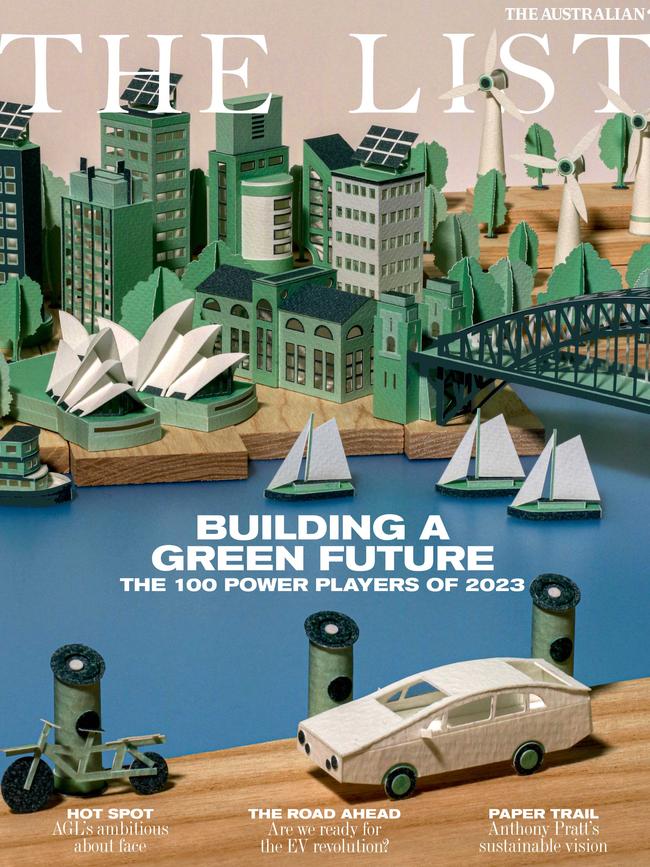Is working together the key to solving climate change?
A collaborative commitment to land repair over greenwashing is emerging as the real challenge of climate change.

Sometimes the obvious answers are still the best.
Former chief scientist, Ian Chubb, spelled it out in his review of Australia’s carbon farming industry that helped to clear the way for what is hoped to be a new era in climate change policy in Australia.
“After experimentation and speculation for decades,” Professor Chubb wrote, “the only pathway known to science that has the immediate capacity to remove greenhouse gas emissions from the atmosphere at scale is photosynthesis: the mechanism by which plants use light, CO² and water to create energy (stored as sugars) to fuel cellular activity and growth.”
“Science and technology may well develop effective and scalable options to meet the twin challenges of GHG [greenhouse gas] removal and secure long-term storage. But to start at scale well before 2050, the land sector will have to carry much of the immediate load, starting now,” Professor Chubb said.
In short, science has been searching for a better mousetrap, but nature still knows best.
Much has been said about the grand bargains that must be made if the world is to effectively respond to the challenge of rising levels of carbon dioxide in the atmosphere. One bargain is to overcome the dilemma first spelled out in an 1883 pamphlet, Tragedy of the Commons, where individuals acting rationally in their own self-interest can be acting irrationally as a collective if they deplete a resource that is owned by everyone. Climate change is considered to be an example of “the tragedy” on a global scale.
Another big but less acknowledged bargain is how best to compensate for the environmental impact of pushing ahead with the currently favoured route of emissions reduction. The rush to renewable energy presents one of the greatest environmental contradictions of our time. In the name of saving the planet we are doubling down on mining the resources needed to replace the industrial processes of today with the technologies of tomorrow. Left unchecked, the green revolution will look a lot like the one it seeks to replace. Wind farms, solar panels, electricity network corridors, metal mines and smelters, hydrogen plants and battery manufacturing promise industrialisation of the rural landscape on a scale many are yet to comprehend.
The counterbalance is to properly fund the land repair needed to compensate. In 2022 the attempt to strike the grand bargain was declared, as “nature-positive” investing moved from fringe ideology to the centre of corporate decision-making. But the battle is far from won. The energy crisis has shown how brittle the shift to environmentally sustainable investing really is. Hedge funds that made a big noise about divestment from fossil fuels and monitoring the actions of the companies they invest in have been quick to vacate the space. The 2022 climate change conference in Egypt was a case in point. COP26 in Glasgow was flooded with the investment world’s elite but COP27 in Sharm el-Sheikh was left largely to its own devices.
Some environmentalists, such as former Greens leader Bob Brown, are quick to call “greenwash”.
“The underlying problem is fast becoming Labor’s policy of meeting the modern environmental emergency by monetising it and hoping the market will fix it. It will not,” Brown says. “There can be no substitute for real action which protects the environment, keeps fossil fuels in the ground and ends the exploitation of living natural resources like forests, marine ecosystems and the atmosphere, which is being used as a dump for pollutants,” he says.
-
Left unchecked, the green revolution will look a lot like the one it seeks to replace: industrialisation of the rural landscape on a scale many are yet to comprehend
-
The hope of many environmentalists is that progress made at the United Nations Biodiversity Conference (COP15) held in Canada in December will bring nature closer to the centre of debate. COP15 set itself the task of settling on a Paris Agreement-style compact for biodiversity. COP15 resulted in the adoption of the Kunming-Montreal Global Biodiversity Framework (GBF) on the last day of negotiations. The GBF aims to address biodiversity loss, restore ecosystems and protect indigenous rights. The plan includes concrete measures to halt and reverse nature loss, including putting 30 per cent of the planet and 30 per cent of degraded ecosystems under protection by 2030.
Australia will host a global nature-positive summit in 2024, where countries and businesses can share technical know-how about increasing private investment in nature, to help reach the goal of protecting 30 per cent of the world’s land and sea by 2030.
The summit follows the Albanese government’s own nature-positive plan for strengthening laws designed to repair nature, to protect plants, animals and places.
New laws will describe the environmental outcomes to be achieved and empower a new federal Environmental Protection Agency to make development decisions and properly enforce them.
The key will be the extent to which business, environment groups and government can learn to work together.
As these sustainability goals become more embedded in corporate performance indicators, there are early signs that former warring parties are starting to unite. The ultimate destination is to find a way to turn the concept of co-benefits and natural capital from environmental services into something that produces fundable credits.

As things stand there is a mismatch between corporate enthusiasm and reliable investments. Before he stepped down as Telstra CEO in March last year, Andy Penn described the frustrations of trying to invest in nature repair. He eventually dipped into the company’s $3 billion capex budget to pilot a project aiming to reinvigorate a 240-hectare parcel of land at Yarrowyck in northern New South Wales in co-operation with local Indigenous communities.
The pilot project was to plant about 158,000 native trees and shrubs, which is expected to store approximately 160,000 tonnes of carbon dioxide in the next 25 years. Mr Penn said the economics of the project had not been established. And in the scheme of things, it would only account for one per cent of Telstra’s carbon emissions. However, it was seen as a test program and the telco has a very big budget to manage its environmental footprint.
The bigger challenge is to do things at scale.
As the potential becomes more real, unlikely coalitions are starting to take shape. Former Wilderness Society campaign director, Lyndon Schneiders, has teamed up with bureaucracy and industry heavyweights to try a new approach.
The Australian Climate and Biodiversity Foundation (ACBF) was founded in 2021 to advocate for the protection and restoration of native forests from threats such as logging and land clearing. Its focus is on the role forest protection, improved management and restoration plays in storing carbon and protecting biodiversity.
“Our mission is also in recognition of the extent of forest loss since colonisation with 104 million hectares of forests completely cleared,” the not-for-profit’s mission statement says. “This is not just an historical problem, but also a contemporary issue with 10 million hectares cleared in Australia since 2000. Much of the remaining forest estate has been heavily degraded through logging.”
The ACBF board is chaired by former Treasury secretary Ken Henry. Other board members include Business Council of Australia president Tim Reed, and Elizabeth O’Leary, the head of agriculture and natural assets at Macquarie Asset Management. Schneiders says the challenge is to build a coalition of the willing from disparate interest groups.
“The first things we did actually was try to put all the warring parties together, got them all around the table and just said, ‘OK, well, you know, right now this system fails the integrity test so if you want to make it work, what would be the big reforms that we need to create?’,” Schneiders says. “Together these disparate groups and interests came up with up with five principles to create a carbon market and a biodiversity market that meant something that was investable and actually doing good rather than doing greenwash.
“Our bottom line is to get policies and processes in place so that you can stop doing the damaging stuff and start doing the new stuff and generate the credits with integrity and get the land management structures and approaches right so that they don’t get burned down every five years.”
The assumption is this requires a carbon and biodiversity price of $30 per tonne over a 50-year period, compared with the federal government’s proposed default carbon price for big emitters of $75 per tonne. The key is to keep all sides engaged on the simple premise outlined by Professor Chubb that increasing photosynthesis via land management is still the answer.
“I think a lot of the hardheads in corporate Australia are basically going, ‘Well, this is a growing market’,” Schneiders says.
“We’ve had 30 years of good people, both landholders, government, and private sector players, working out how to start to restore the environment, so we’ve got a solid basis of information and experience based on trial and error. What we haven’t had is any of the policy settings to make it work with integrity,” he says.


To join the conversation, please log in. Don't have an account? Register
Join the conversation, you are commenting as Logout